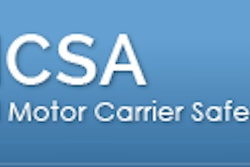As part of a 10-year effort to improve technology in the safety inspection arena, the Federal Motor Carrier Safety Administration announced over the weekend that they will be coordinating a field test to see if wireless technology can be used to conduct roadside inspections.
The focus will be on maintaining quality while providing a more efficient way of conducting inspections, enabling the compliant driver to continue on rather than stop, states Chris Flanigan, manager of the wireless roadside inspection program at FMCSA. Drivers will be able to stay at speed while the commercial mobile radio service technology actually does the inspections.
The testing will be ongoing for the next three years and will encompass approximately 1,000 trucks and 2,400 miles of roads in Kentucky, Tennessee, North Carolina, Georgia and Mississippi. FMCSA is working together with the Oak Ridge National Laboratory to choose the radio service provider, which in turn will choose carriers to take part in the evaluation process.
“[The processing system] will have to show that the system can manage the volume of data and provide a benefit to compliant carriers,” says Flanigan. The wireless system will process data from the truck, transmitting it to the inspection facility, federal and state databases, and the carrier.
All of this will take place in what will be called a “geofence area.” These are trigger points for the wireless system that will be in place on the road. Once the drivers enter the geofence area, data immediately starts to route to the operations center. The operations center then takes this information, including driver credentials, truck information and hours of service, and adds more data such as carrier information. It then sends this safety data message to the processing system.
Once the wireless system takes account of all the received information, it sends a message back to the operations center, which in turn sends a message to the driver. That message may be to turn into an inspection area or continue on the road. All of that information is also sent to the inspection officials and to FMCSA’s Safety Measurement System.
Details are still yet to be worked out. For example, the message to the driver may be in the form of a stoplight. A red light would tell the driver to stop, green would mean continue on and yellow may mean that there is insufficient data to proceed.
The data will likely be used to help determine carrier Compliance, Safety, Accountability scores, as well, specifically in the areas of driver fitness and hours of service compliance.
To read more, click HERE.


















